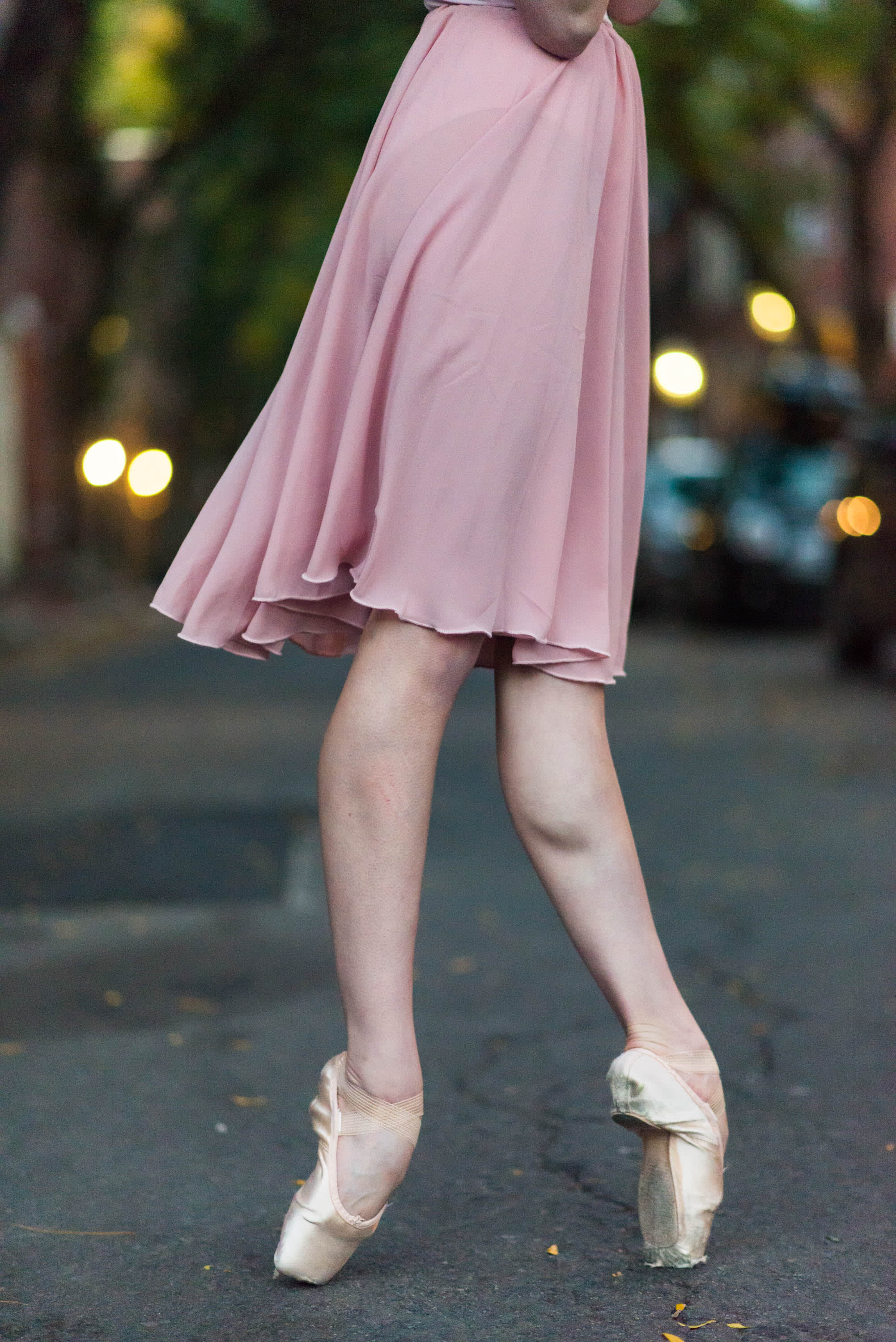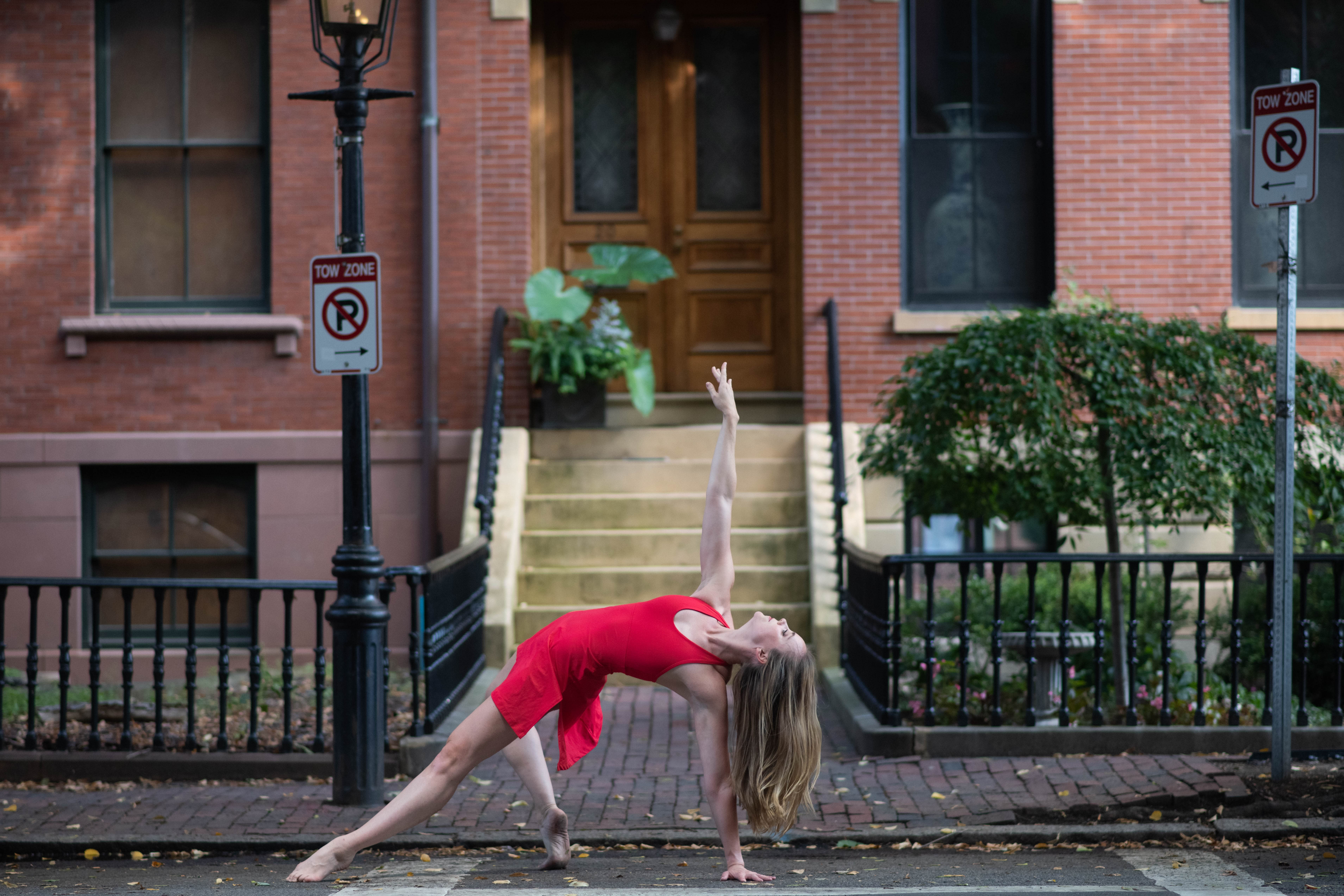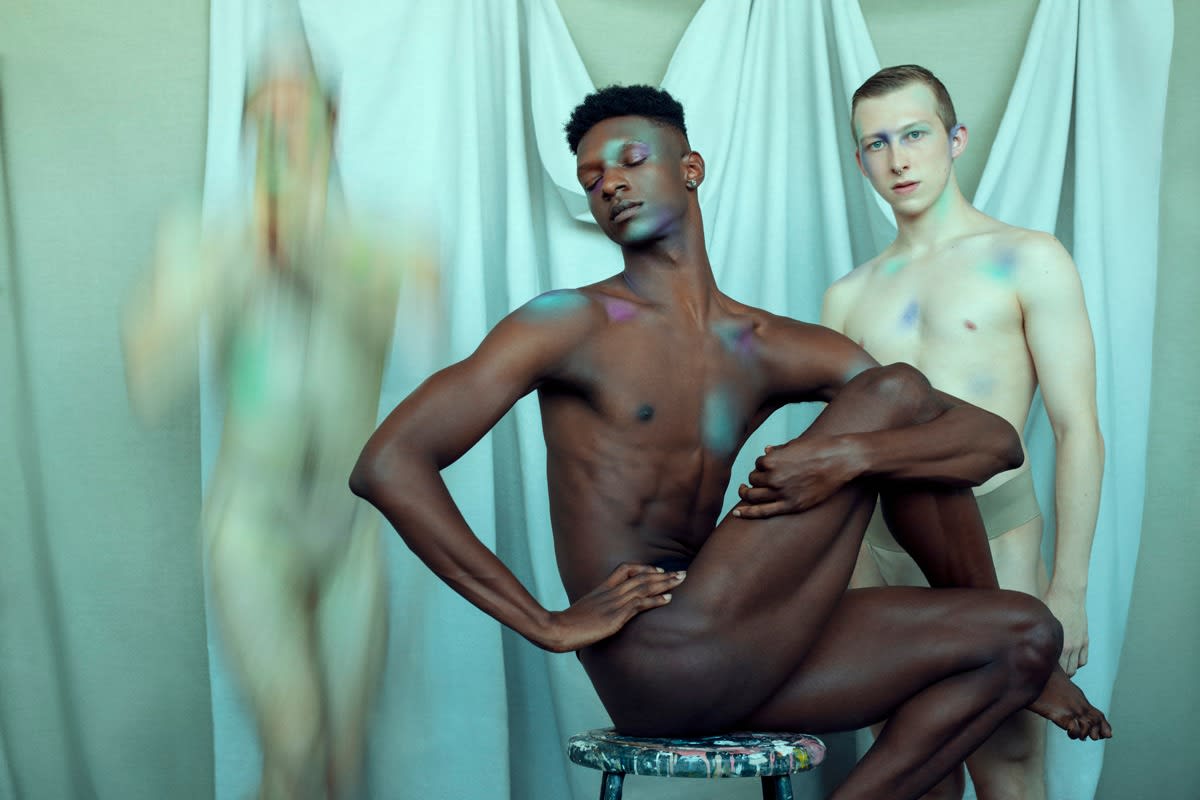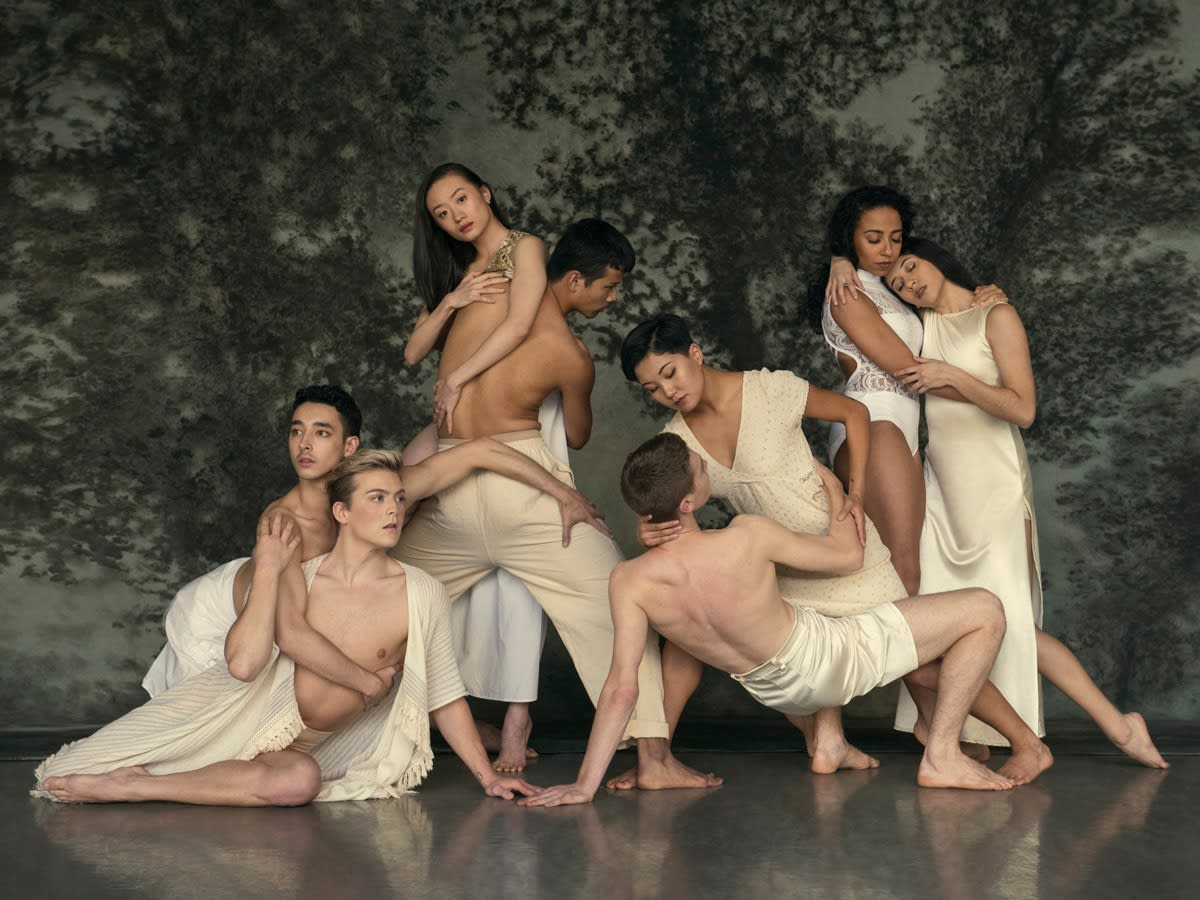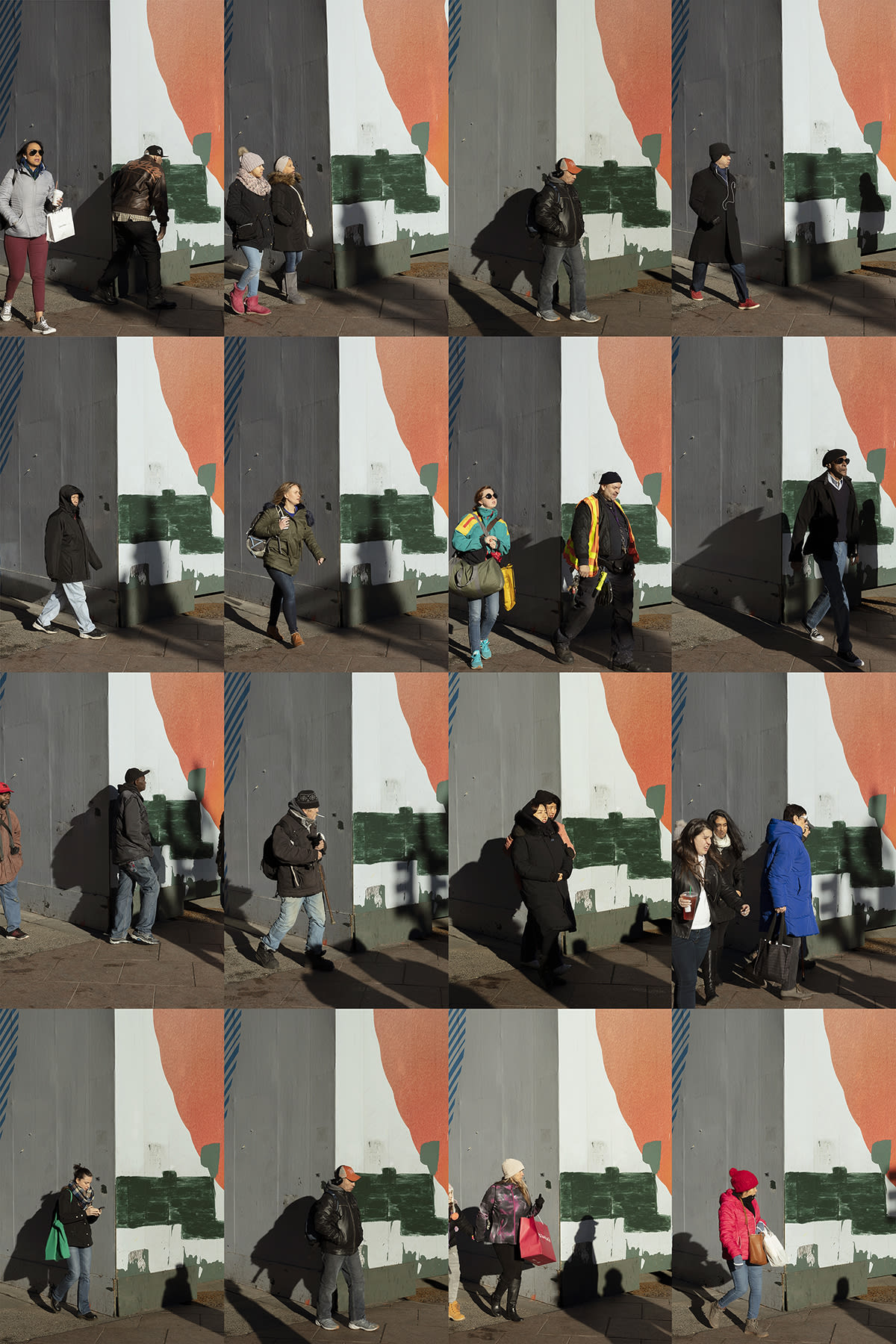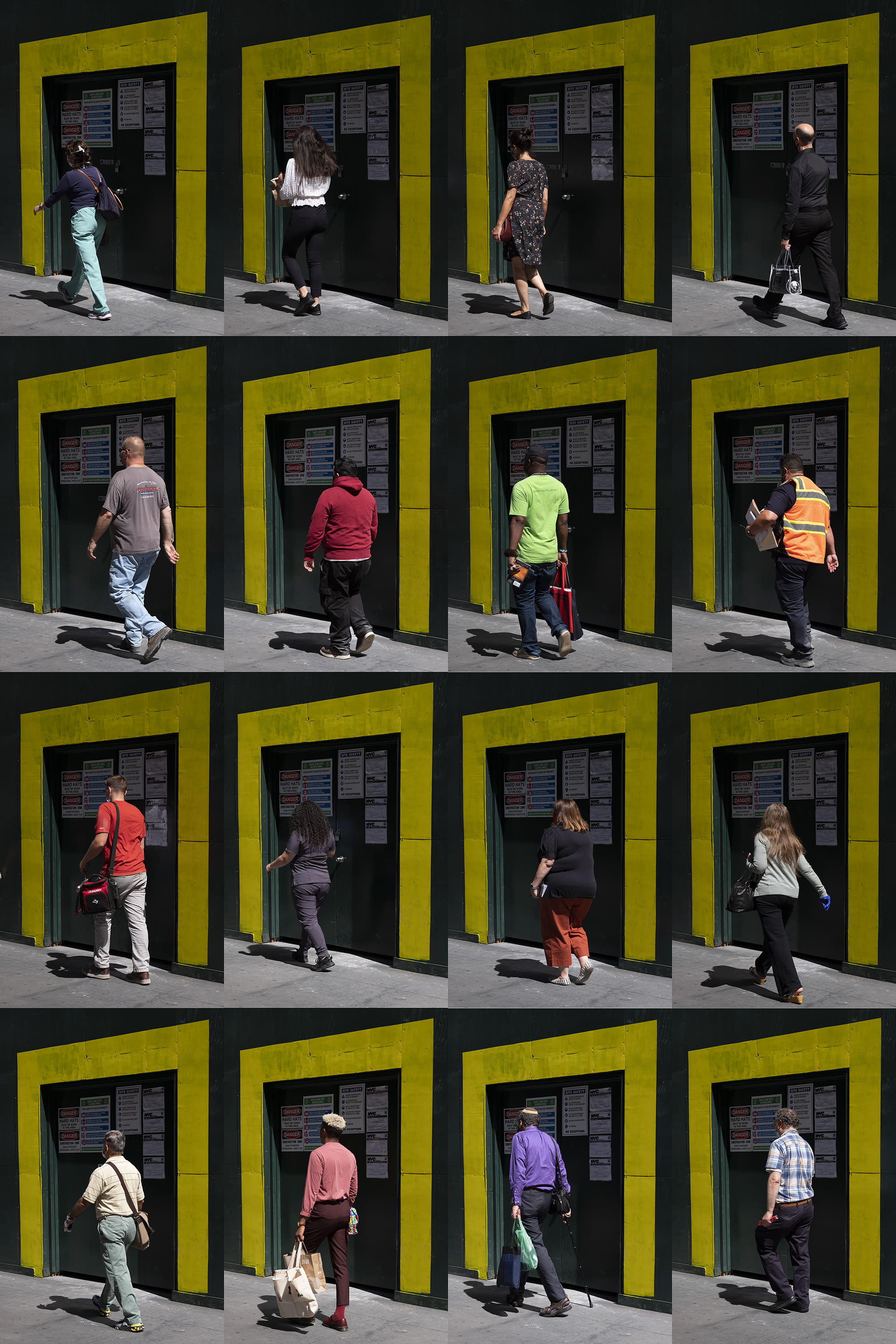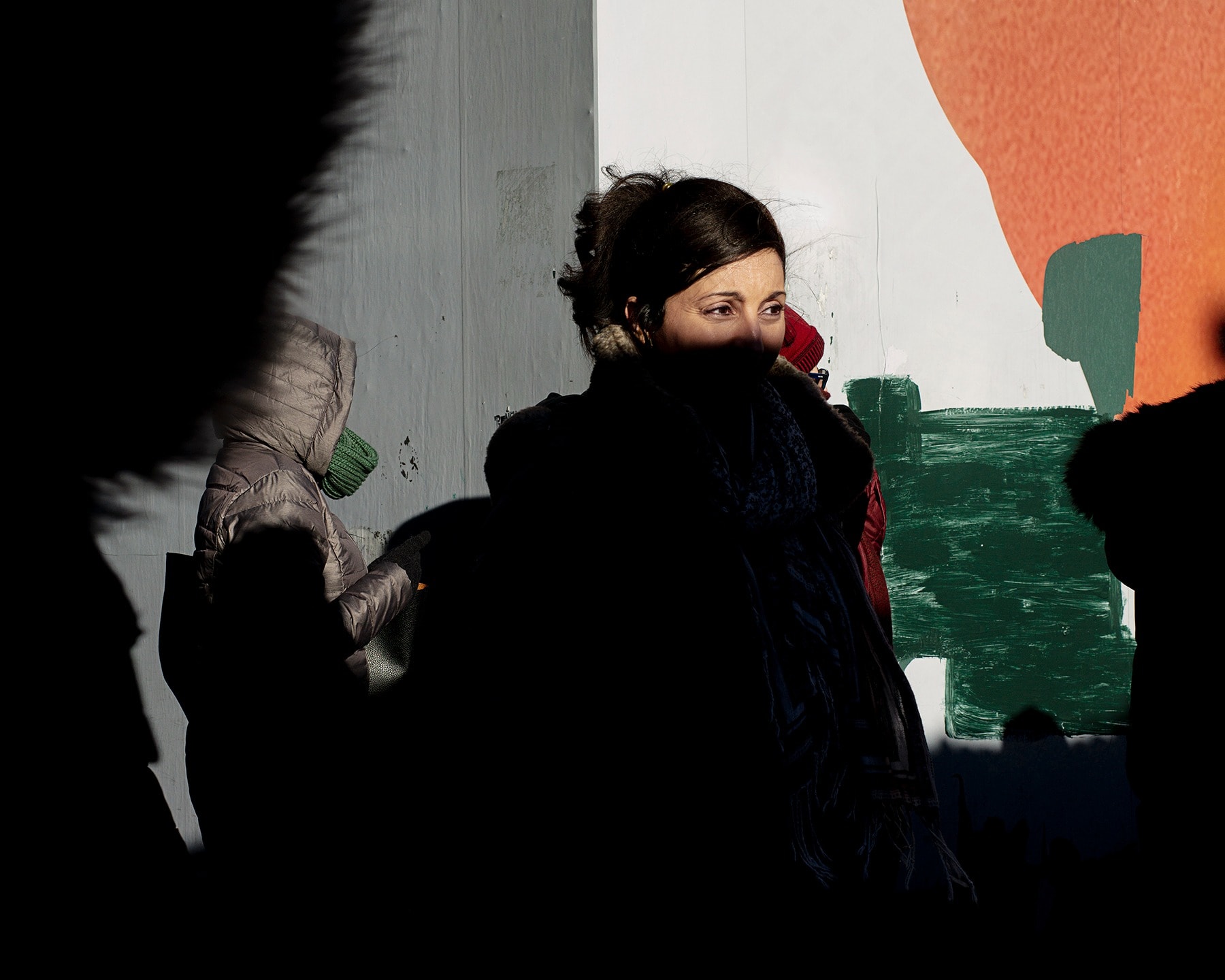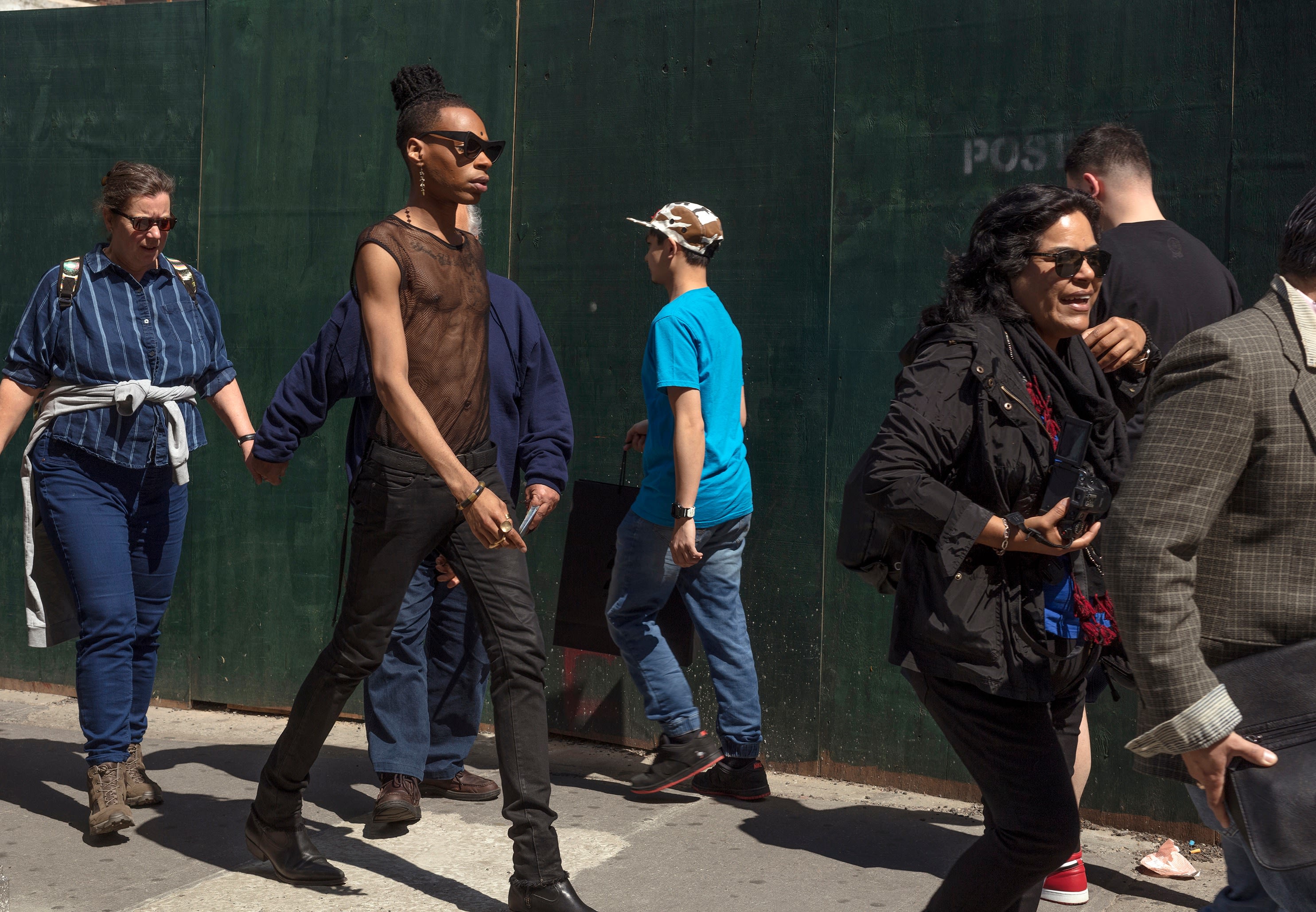Photography focusing on the people and practices of ballet and modern dance
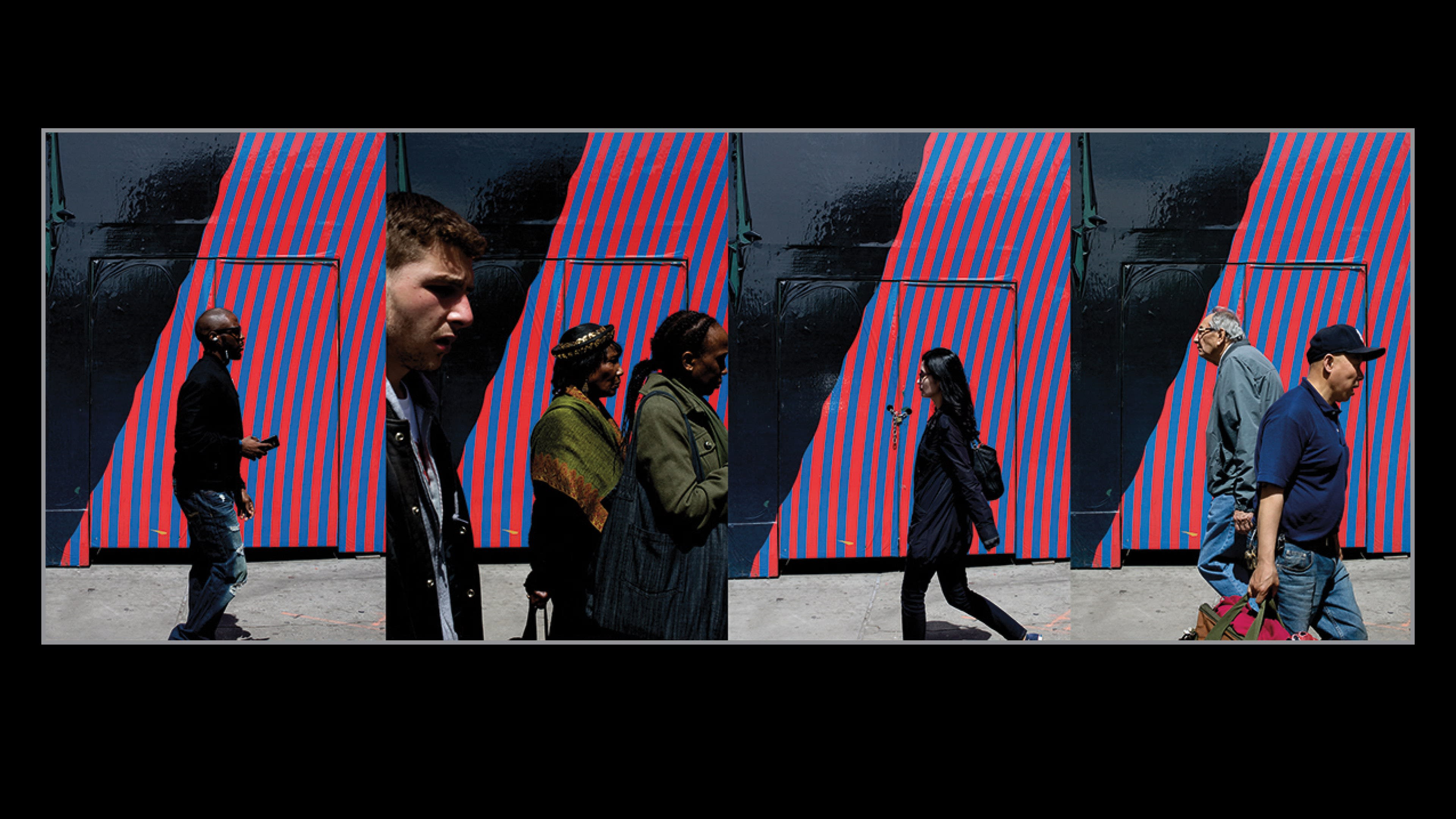
Elizabeth Bick, detail from “Movement Study I: Street Ballet,” 2017.
For a trio of photographers from the School of Visual Arts community, carving out a space at the intersection of photography and dance offers a range of possibilities. However, despite distinct differences, the works of Brooke Trisolini (BFA 2018 Photography), Nir Arieli (BFA 2012 Photography) and Elizabeth Bick (faculty, BFA Photography and Video, MPS Fashion Photography) share a common origin: a photographic response to the human body informed by personal histories rooted in dance.
Whether it’s the perfection of classical ballet, improvisation of contemporary dance or conceptual space of postmodern dance, the language of movement in relation to photographic practice is informed by a framework of embodiment. For Trisolini, it is the beauty and grace of ballet; for Arieli, the “physical intelligence” of contemporary dance; and for Bick, the mapping of stagecraft onto an image. In each case, a range of interrelationships among chance, collaboration, improvisation, control and preparation are in play.
Brooke Trisolini
Brooke Trisolini’s background as a dancer and gymnast, paired with her passion for photography, has resulted in a solid foothold in the world of commercial dance photography. On a tip from fellow alumnus Nir Arieli, she landed an undergraduate internship at the renowned Jacob’s Pillow dance center in Becket, Massachusetts. While there, she met members of the Boston Ballet, where she went on to intern in her final semester. She is now in her fourth year of working as a photographer for the company.
Despite Trisolini’s fortuitous encounters, her knowledge as a former ballet dancer, which clicks into gear when she gets behind a lens, is the cornerstone of her career’s remarkable ascent.
“It was very interesting to me that I already knew the language,” she says. “Every pose is so specific, and they have to hit it in a certain way.”
In Trisolini’s commercial work, which includes shooting rehearsals, performances, special projects and studio imagery, the importance of capturing the perfect image is paramount. During the pandemic, this insider’s attention to detail has become arguably more important. With the rows of the Boston Opera House, the company’s home theater, kept empty due to safety measures, the Boston Ballet has instead been dancing in the company’s home studio for a live audience of two: Trisolini and a videographer, who document their performances for subscribers to the company’s virtual season.
“I know the timing of when they’re going to jump or when they’re going to do certain positions,” she says. “So it’s easier for me to capture the right moments and to know what will and what won’t be approved. Ballet is very detail-oriented—if I don’t pay close enough attention to the small details while shooting, it’s not going to be a good photo.”
It is the same intuitive cognition of how the body moves during ballet, in tandem with the visual language of photography, that informs Trisolini’s more collaborative personal work with dancers. Although a finite set of ballet poses offers a default framework for her subjects, who often pose on city streets or within urban landscapes, Trisolini encourages them to improvise while she focuses on their unique strengths.
From top: Photograph of The Gift, a 2020 holiday performance by the Boston Ballet, by Brooke Trisolini (BFA 2018 Photography); in addition to her commercial work, Trisolini photographs dancers in urban settings, encouraging them to improvise while she concentrates on capturing their unique strengths.
Nir Arieli
Critiqued early on for the beauty of his photography, Nir Arieli eventually discovered a way to develop his work in counterpoint to the aesthetic values of ballet. Taking a cue from contemporary dance, he spurs dancers’ interpretative talents to create images whose emotional complexity, discord and asymmetry serve as a counterbalance to beauty fatigue.
Initially, as a portrait photographer, Arieli functioned more as a director, constructing every aspect of a subject’s presentation to the camera. His cousin, a dancer at Juilliard, introduced him to other dancers, and Arieli discovered the collaborative power of working with fellow artists.
“With the dancer, there’s always so much that they’re bringing into the process, especially working with contemporary dancers—as opposed to classical dancers, where it is often more about very strict and rigid vocabularies,” he says. “The choreographer might come with some sort of a collection of ideas, like a very vague storyline. Then they will communicate it to the dancer verbally and then a dancer will make something physical out of it. This is what I call ‘physical intelligence.’”
It was this intelligence that Arieli found most impressive. “They can take a very abstract idea and turn it into this beautiful dance. This is basically what I do. I communicate to the dancer, then I’ll let them move within their own interpretation.”
In Arieli’s early series “Flocks,” he gave an abstract directive to dance companies in Canada, the United States, Israel and elsewhere to make a human structure of bodies. He wanted the dancers to loosen up, relax and close as many gaps as possible between the layered sculpting of their forms. The physical language that was generated between each group proved to be intimate and unique; each group’s analysis of his idea fascinated him. More recently, he undertook another ambitious dance-related project, two and a half years in the making. Working outdoors—at an upstate New York horse ranch, at a waterfall in Massachusetts, in New York City parks and under city bridges—Arieli photographed two dancers as they improvised movements based on ideas and narrative elements from the Old and New Testaments. Collectively, he says, “We’re trying to make this cinematic scene that revolves around a relationship and to describe a pivotal moment of danger or horror.” (The work is completed, but currently being kept under wraps as Arieli seeks the right opportunity to present it.)
Like Trisolini, Arieli’s commercial dance photography—with such prestigious companies and schools as Gibney, Ailey II and Juilliard—has continued despite the pandemic, with additional complications and restrictions; in March, he worked with the Ailey School for the second time in the past year. And not long ago he put together a small-scale personal production at a friend’s painting studio, where he photographed three Juilliard dancers who were maintaining a quarantine pod together.
“I believe dance is its own medium and have so much respect for it that I would never try to represent it as is in my photography,” he says. “Dance is a series of moments; it doesn’t exist in one moment, and when you freeze it, it becomes something else. Really what I’m trying to make is an invitation—something that has a sense of the style and atmosphere, and maybe a little mystery.”

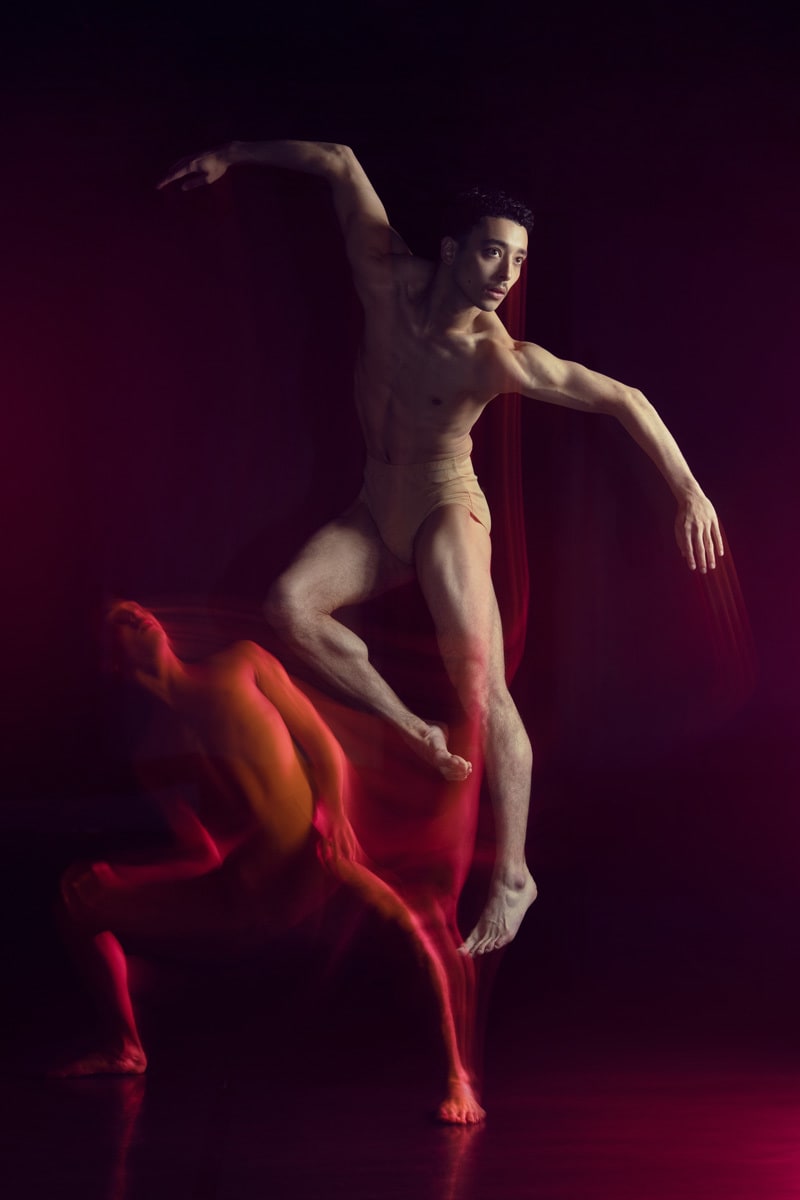
Elizabeth Bick
Moving further still from the traditional language and presentation of movement-based performance, the work of Elizabeth Bick—on view through mid-July in a solo exhibition at the Houston Center for Photography—infuses street photography and portraiture with a postmodern dance ethos. Creative movement artists like Yvonne Rainer and Meredith Monk, who blur the boundaries between ideas of dance and movement, whether ordinary, unusual or experimental, are in some part responsible for a generative space of postmodern dance as contemporary art, due to its idea-based emphasis. For Bick, a serious and dedicated dancer through high school, the difficult choice to attend college instead of pursuing professional dance training proved rewarding: She discovered photography, and has gone on to make work that derives its power from the tension between, and marriage of, the two mediums.
Bick brings a performer’s discerning eye and formal discipline to capturing seemingly mundane street scenes. “When you put a rectangle around the world—especially in a pedestrian world, in an urban world—it starts to have characteristics of dancers, clothing as costume, lighting as theatrical and the backdrop as a stage depending on where you are and the choices that you make,” she says. But, as she notes, “It is virtually impossible to control anything that happens in the street without any intervention—to anticipate what you’ll see, what you’ll photograph or how a picture will turn out.” As a foil to this chaos, she reaches back to her dancer’s past to conceptualize her work using the ideas of scores or structures, chapters or scenes.
In “Movement Study I: Street Ballet,” the first of three “Movement Studies” series—an ongoing project that has, to date, resulted in four monographs—Bick borrows from topographic photography through her use of a grid format. Selecting a street location with a graphic architectural background at a particular time of day or season to approximate theatrical lighting, she captures different passersby within the same scene. The subsequent series, “Movement Study II: 40.752200-73.993422” and “Movement Study III: Circling a Hawk,” are gradually more personal in their perspective, with the final iteration focusing on the trans model, actor and activist B. Hawk Snipes—one individual, both at home and in the street.
In some senses, “Movement Studies” as a whole offers a three-act drama on the movement of bodies through anonymous spaces within the city, concluding with the intimacy of a specific address and person. While a storyline may be available, Bick’s conceptual aims are central to her process. “It’s always a proposition in my work,” she says. “Whether it’s possible to detect movement in its fullest form, I actually would say no. But it is possible to explore how kinesis works, how the human body moves, through the conduit of certain techniques of photography.”
At the onset of the pandemic in the U.S. last spring, a time in which our public presentation and movements were most freighted with fear and caution, Bick created her latest movement-study grids, featuring masked pedestrians. Not much later, on an extended visit to her hometown of Houston, she dressed her parents in hazmat suits and photographed them enacting a choreographed series of coronavirus-inspired poses for a different sort of grid—deliberately incomplete, with any sense of sequencing scrambled. And in June, she was one of 50 artists commissioned by the Public Art Fund to create a work to be installed in bus shelters throughout New York City’s five boroughs over the summer. Collaborating again with B. Hawk, Bick photographed them and their mother in tender poses of mutual caretaking, enacted on the street outside of their Bronx home at the height of the 2020 Black Lives Matter protests—a gesture of “connection and warmth and beauty” in an often despairing time.
Another ongoing project of Bick’s, now in its eighth year of a planned 10, involves a distinct location at a distinct time. Every summer solstice, a sea of tourists gather at the Pantheon in Rome to await the passage of sunlight through the oculus of the ancient structure’s dome. When photographed at that instant, using the right exposure, the spectators appear to stand before a backdrop of complete darkness. Similar to the climactic moment of a dance or Aristotelian plot, the effect is thrilling.
Last summer, with international travel restricted, Bick hired two Romans she knows to take the photograph for her. One operated a rented camera; the other kept a running FaceTime call with Bick, so she could arrange the composition and direct the shoot. As the photograph was taken, Bick also photographed her computer screen, creating an “impressionistic, out-of-focus” image that she layered over the photograph that was taken on site. The effect of the composite, she says, is ghostly, and will serve to mark our year of collective confusion and grief in a project already conceived as a gesture of fellow feeling.
“Everyone under the light looks so monumental,” she says. “It’s an homage to the beauty of humanity, no matter who you are. That’s really the goal of that work.” ✺
Additional reporting by Greg Herbowy.
Diana McClure is a writer and photographer based in New York City. Her essays, reviews and profiles have appeared in Art Basel magazine, Art21, Cultured, catalogs, monographs and other publications. For more information, visit dianamcclure.com.





